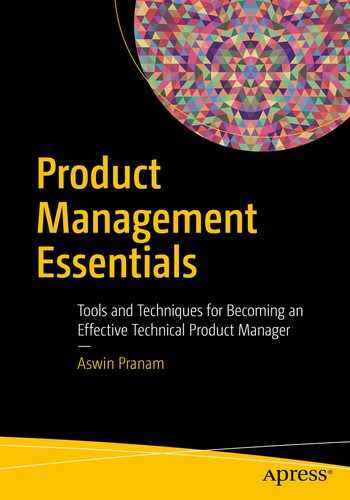Umesh Unnikrishnan is Head of Product Management, Search Ads at Pinterest. Prior to Pinterest, Umesh led product teams at Google (AdWords, DoubleClick, Wallet) and Microsoft (Office & Visual Studio).
What does the term “product manager” mean to you?
To me, a Product Manager
“owns” the product end to end. Some companies actually use the title “Product Owner” for this role. As a Product Manager, your goal is to ensure the success of the product in all its dimensions. Your job is to get your users and customers to love the product, to enable the product to become a successful, sustainable business, and to make sure that the teams that work on the product are excited by the work they do.
What interested you initially about product management?
My first job out of school was as a developer on the Outlook team at Microsoft. I loved the work I did there - I got to build features that were used by millions of users and as a geek that loved network protocols and file formats, I got to spend a lot of time analyzing, debugging, and fixing related issues deep in the bowels of that product.
The first time I got to meet a real live customer though, I realized that users didn’t care as much as I did about file formats and protocols, but cared more about what the product was doing for them and how it was solving their business needs.
That inspired me to get a deeper understanding of what business problems our products solved and how users were using them on a day to day basis. I realized that the most successful products, whether consumer or enterprise, were the ones that were solving real user problems in the simplest way possible. If you aren’t solving a problem in the simplest way possible, someone else will come along and solve it better, taking your users and customers with them.
How do you deal with failure as a PM?
The default state of any product is failure. As a product manager, you need to create a path to success and remove the roadblocks that block that path. This doesn’t guarantee success, of course, and when you eventually fail, you need to look back and understand the factors that caused the failure.
Was it poor product-market fit
or poor execution (or both)? Could more resources have solved the execution failure? Was the product too early or too late to market? Was the niche too small or the competition too intense?
Understand the reasons your product failed (and remember, the product failed, not you!). Do a post mortem of what, if anything, you could have done differently to change the outcome and either share it with your team or keep it to yourself depending on the culture and temperament of your organization.
Once you’ve internalized what happened and what you could have done differently, take a break and move on to your next project. A good PM has a long list of projects they want to actualize.
What tools help make your life easier as a PM?
As a PM, you’ll be bombarded with requests every hour and your todo list is always growing. Have a system to tame and track that list. I’m personally a fan of David Allen's Getting Things Done methodology. I use Evernote to keep a log of everything incoming and then use a block of time at the end of the day to either do, delegate, or delete these todos. The more you keep off your mind, the more bandwidth you have to think, plan, and be creative.
How is product management different between enterprise and consumer products?
The biggest difference between a consumer product and an enterprise product is that for consumer products, the user and customer are the same person whereas for enterprise products the user and the customer are different people often with different motivations.
Consumers make the decision to buy, install, or use your product based on emotional reasons - is your product useful? Is it fun to use? Is it cool to use it? Does my peer group like the product and so on?
On the other hand, enterprises make purchase decisions based on business and political reasons. Is your product going to make or save us money? Is the product easy to deploy and support? Will I get fired or promoted for choosing this product?
Once you internalize this difference, it becomes easier to know who to build your products for and what to prioritize when building the product. You can make the easiest to use enterprise product with the sexiest UI, but if it’s a pain to deploy and manage, no enterprise will buy your product.
